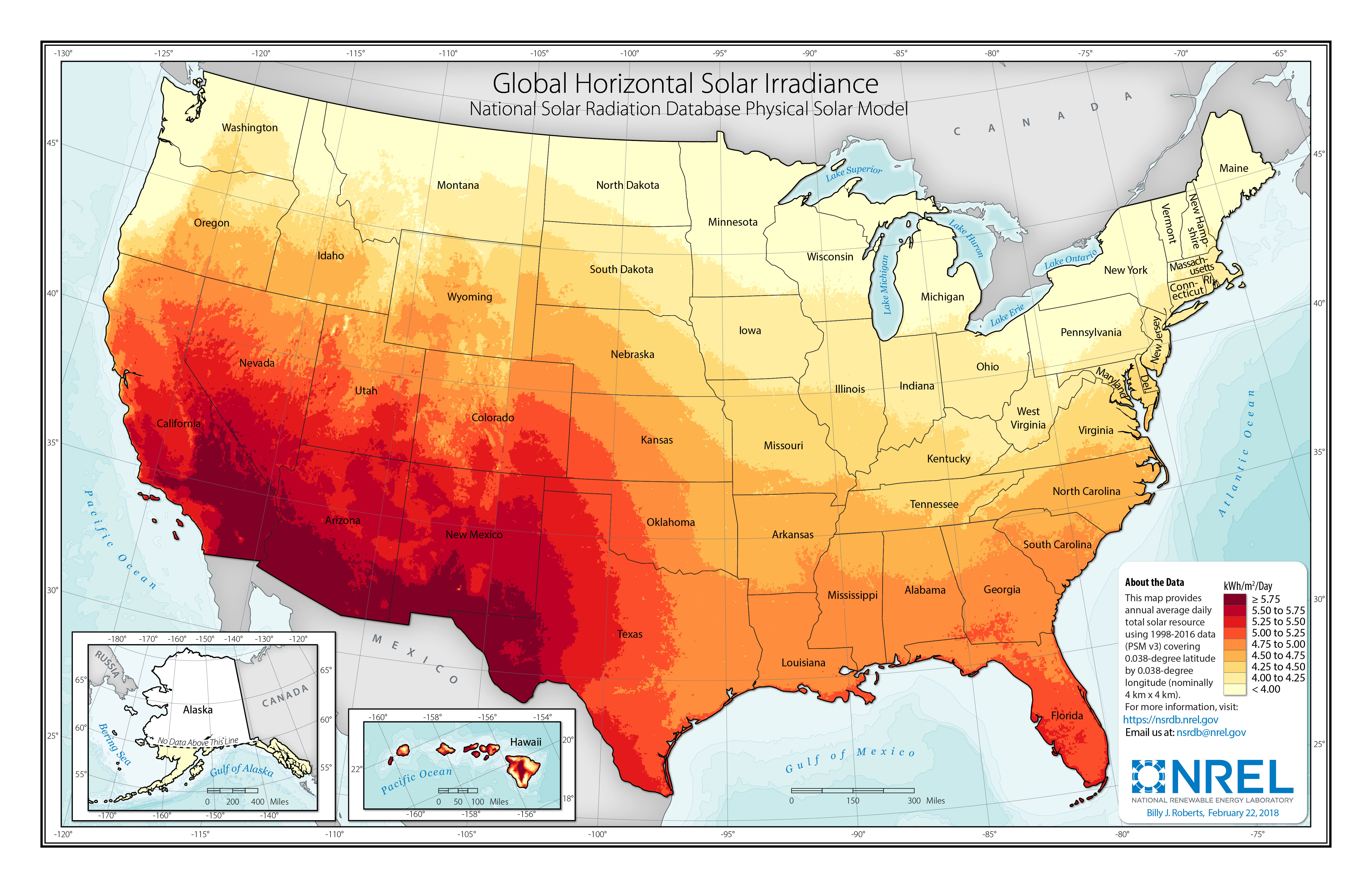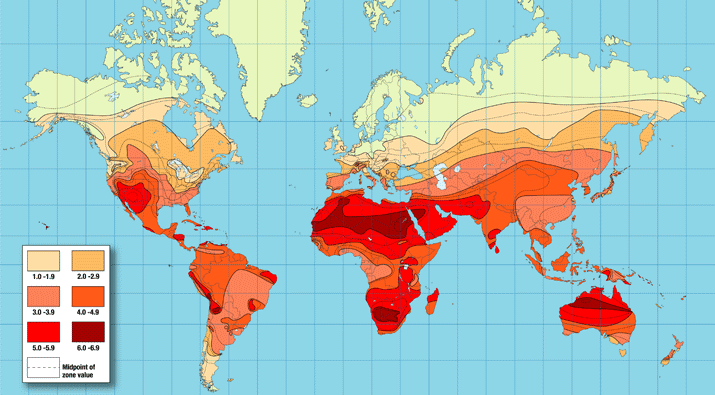Don't know where it should go? Stick it here!
Message boards :
The Lounge :
Don't know where it should go? Stick it here!
Message board moderation
Previous · 1 · 2 · 3 · 4 · 5 . . . 38 · Next
| Author | Message |
|---|---|
 Dave DaveSend message Joined: 28 Jun 10 Posts: 2538 
|
They haven't really paid for themselves, you've been given money by the government. It may be different in hotter climates, but in the UK solar panels are not a good way of generating power. We should stick to wind and hydro, we get plenty of rain and wind! For hydro we just don't have the area with sufficient drop to make much difference. As to not being worth it the solar on our roof produces over twice what we use each year and that is with only 2KW there rather than the maximum of 4. If we get a car again at any time it will be an electric so we will be able to charge it using the solar and use more of what we generate so makes a lot of sense. I don't really believe solar farms to be that great an idea but putting as much on roofs as we can seems like a no brainer to me. |
 Dave DaveSend message Joined: 28 Jun 10 Posts: 2538 
|
How on earth is 2kW enough for you? 2kW is the absolute maximum the panels will give you on the equator at midday. In the UK that's never even remotely achieved. 20% (400W) if you're lucky. Output right now is 1.3KW. It will be up to about 1.7KW at midday. That is enough that except when using vacuum cleaner or one of a few other items everything else is covered during much of the day until about half way through October. I turn freezer up or should that be down to -25C during the day so it gets through most of the night without using any electricity. I think you will find that the panels are rated for UK output. |
 Dave DaveSend message Joined: 28 Jun 10 Posts: 2538 
|
Well I had some that were 250W each (pretty standard - folk with 4kW on their roof always have 16 door-sized panels). Never got anything remotely approaching that power. But then I'm in Scotland where the sun is very weak. I'm assuming chances are you're further south. We have solar thermal and a wood stove that I can get free (bar the cost of running a chainsaw) wood for so rarely have to use gas for heating. During the day there is fridge and freezer and nothing else except computers most of the time. I am in Cambridge and during June and July our panels peak at 1.9KW at midday. |
 Keith Myers Keith MyersSend message Joined: 17 Nov 16 Posts: 869 
|
If you only manage 2KW, than you don't have enough panels. I sized my system for two BOINC computers and an EV and ended up with a 8.32KW system comprising 32 260W panels. I was even-steven with the power company for two years. The ROI balanced out in six years. Every year after that was positive to the bottom line. Until I added 3 more BOINC crunchers and the scales tipped the other direction because my consumption now exceeded my generation by 10MWh a year. I was generating 18MWh a year but consuming 30 MWh a year. Added another 2.9 KW secondary system later but that still was not enough. Would have to triple my generation to balance my consumption. Dropped back to two crunchers after Seti ended and will be in much better shape this year. 40° N. latitude so a bit more irradiance available for me than you in Scotland. I average around 13,800 kWh a year in production on the primary ground mount array and add another 4000 kWh a year with the secondary roof array on the garage.  The NREL PVWatts Calculator shows for Abeerdeen a 3KW system comprising 9 320W panels which should produce 2,396 kWh a year. That is the same configuration for my secondary garage roof mount array. https://pvwatts.nrel.gov/pvwatts.php |
 Dave DaveSend message Joined: 28 Jun 10 Posts: 2538 
|
If you only manage 2KW, than you don't have enough panels. Agreed. Looking to get more soon even though they won't get the same rate of feed in tariff as the originals. |
 Keith Myers Keith MyersSend message Joined: 17 Nov 16 Posts: 869 
|
I have never benefited from any feed in tariff. I have simply reduced my consumption through my generation. Every excess kWh I produce and send to the grid gets subtracted from my consumption every month. I have never been on the positive side of the equation. From what my utility pays for any excess generation over my total yearly consumption is a pittance and not worth considering. Best scenario is to have exactly equal generation offsetting my yearly consumption so the yearly settle up bill is $0.00. |
 Dave DaveSend message Joined: 28 Jun 10 Posts: 2538 
|
I have never benefited from any feed in tariff. I have simply reduced my consumption through my generation. Every excess kWh I produce and send to the grid gets subtracted from my consumption every month. I have never been on the positive side of the equation. From what my utility pays for any excess generation over my total yearly consumption is a pittance and not worth considering. Best scenario is to have exactly equal generation offsetting my yearly consumption so the yearly settle up bill is $0.00. Here in UK, they had a feed in tariff to encourage the industry. This has been steadily reduced and is now not available for new adoptees. I am looking, probably next year to double what we have on the roof connected to the grid bringing it up the the 4KW maximum we are allowed and another 4KW off grid which could run computers and some other stuff but that depends on finances and while it looks like it might be possible now, in the current situation (pun not intended) that could easily change. |
|
Send message Joined: 18 Oct 14 Posts: 1472 
|
I learned something new today, my day is successful. Both roofs and rooves are listed as plurals in the Oxford Dictionary of English, 2005 edition. |
 Keith Myers Keith MyersSend message Joined: 17 Nov 16 Posts: 869 
|
I have never benefited from any feed in tariff. I have simply reduced my consumption through my generation. Every excess kWh I produce and send to the grid gets subtracted from my consumption every month. I have never been on the positive side of the equation. From what my utility pays for any excess generation over my total yearly consumption is a pittance and not worth considering. Best scenario is to have exactly equal generation offsetting my yearly consumption so the yearly settle up bill is $0.00. I have paid for the cost of the system in avoiding 6 years worth of higher utility bills without solar production. That was when the ROI was balanced. Now every kWh I produce directly reduces my consumption and thus my monthly power bill. I live in Northern California and have around 5kWh/m²/day of solar irradiance.  and for the World.  |
 Keith Myers Keith MyersSend message Joined: 17 Nov 16 Posts: 869 
|
My system payback was actually a lot faster than the original planning document outlined. Payback was in 4 years and 9 months. Paid off in August of 2018. The solar generation credit of 30% of the system value was deducted from my first two years tax bills. Plus I pay a lot more for power than you I suspect. My power tariff has ranged from $0.13 - $0.52 kWh depending on the season since I put the system in. Generally I knocked about $175 off each month's power bill since installation. My annualized ROI was around 22%. |
 Gary Charpentier Gary CharpentierSend message Joined: 23 Feb 08 Posts: 2464 
|
My system payback was actually a lot faster than the original planning document outlined. Payback was in 4 years and 9 months. Paid off in August of 2018. The solar generation credit of 30% of the system value was deducted from my first two years tax bills. Plus I pay a lot more for power than you I suspect. My power tariff has ranged from $0.13 - $0.52 kWh depending on the season since I put the system in. Less to do with hugging trees, more to do with not setting them on fire. https://www.statista.com/statistics/322874/electricity-consumption-from-all-electricity-suppliers-in-the-united-kingdom/ 301.76 TWh https://www.energy.gov/sites/prod/files/2015/05/f22/CA-Energy%20Sector%20Risk%20Profile.pdf 259.5 TWh Now over there you likely don't have A/C in every home because the summers aren't 30°C at night and 50°C in the day. https://www.currentresults.com/Weather/California/Places/death-valley-temperatures-by-month-average.php :) |
Copyright © 2024 University of California.
Permission is granted to copy, distribute and/or modify this document
under the terms of the GNU Free Documentation License,
Version 1.2 or any later version published by the Free Software Foundation.